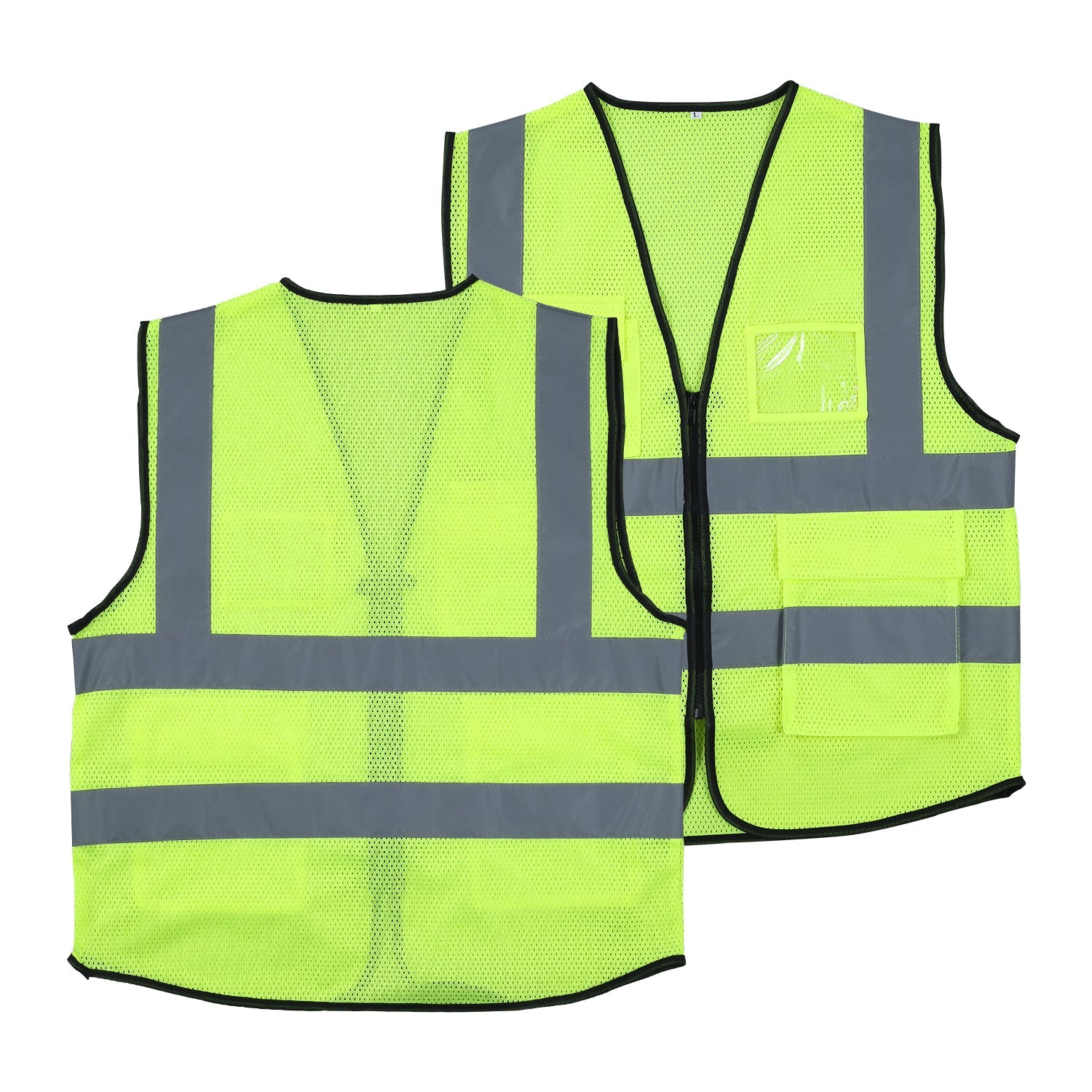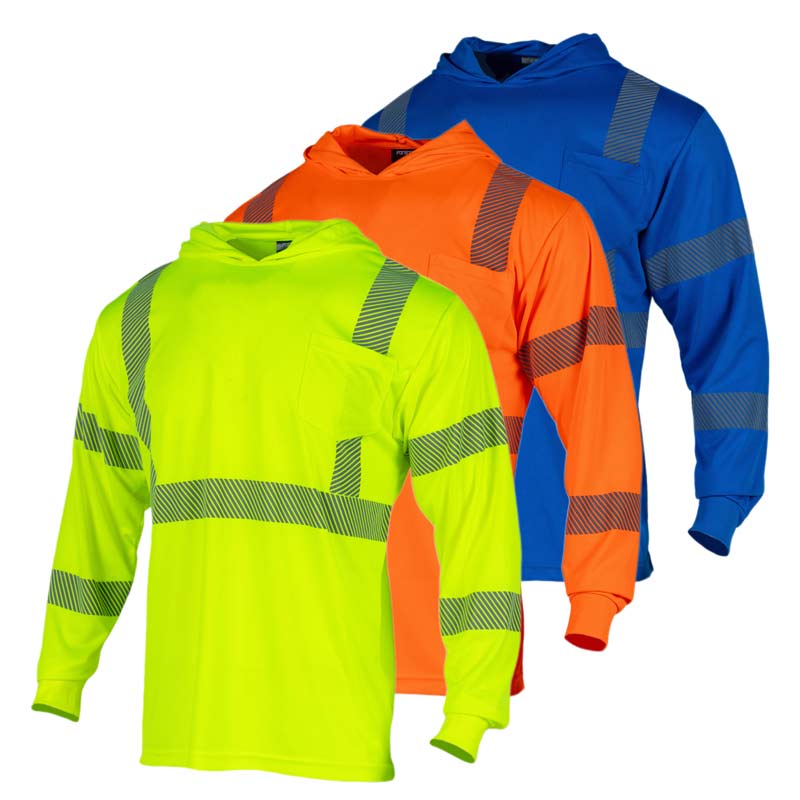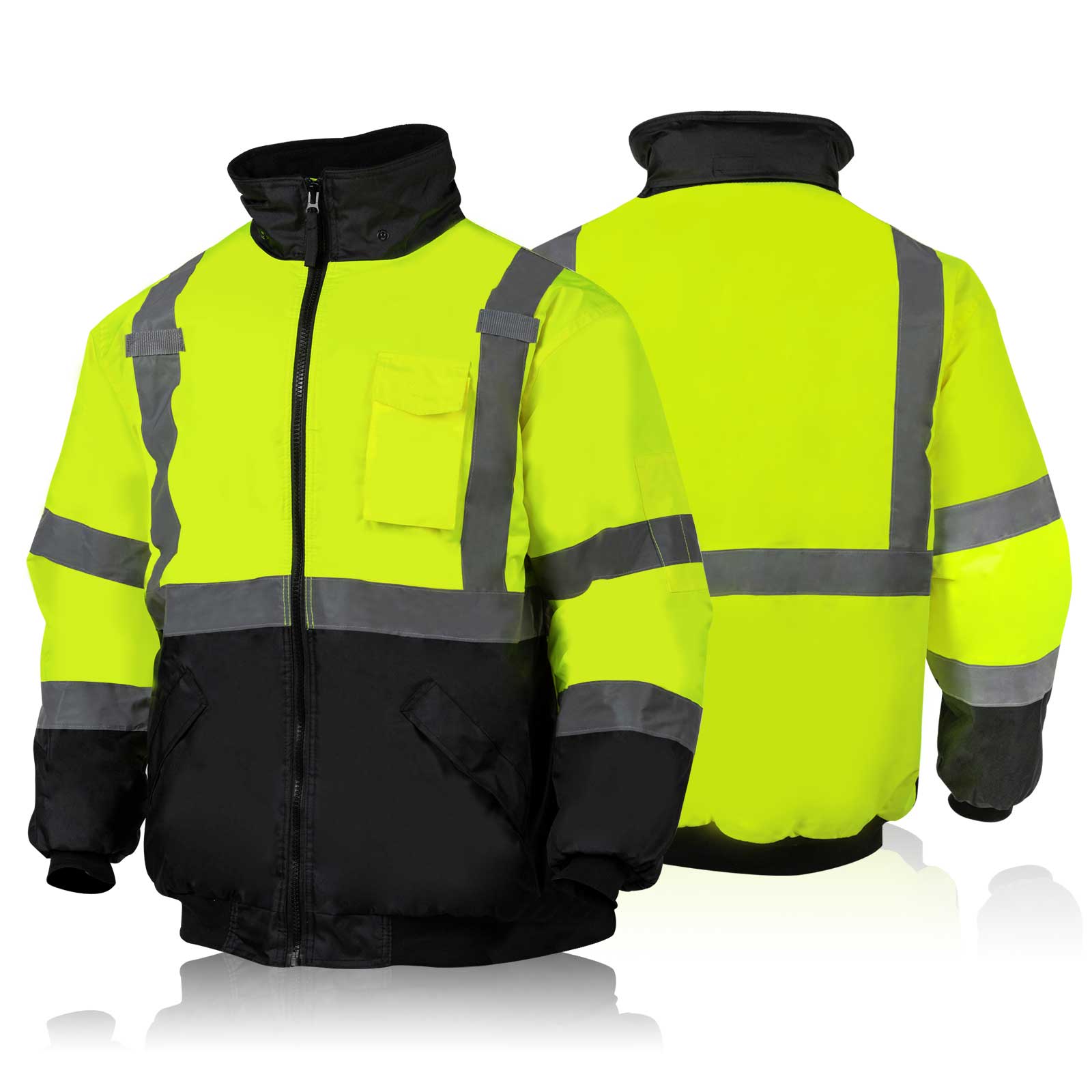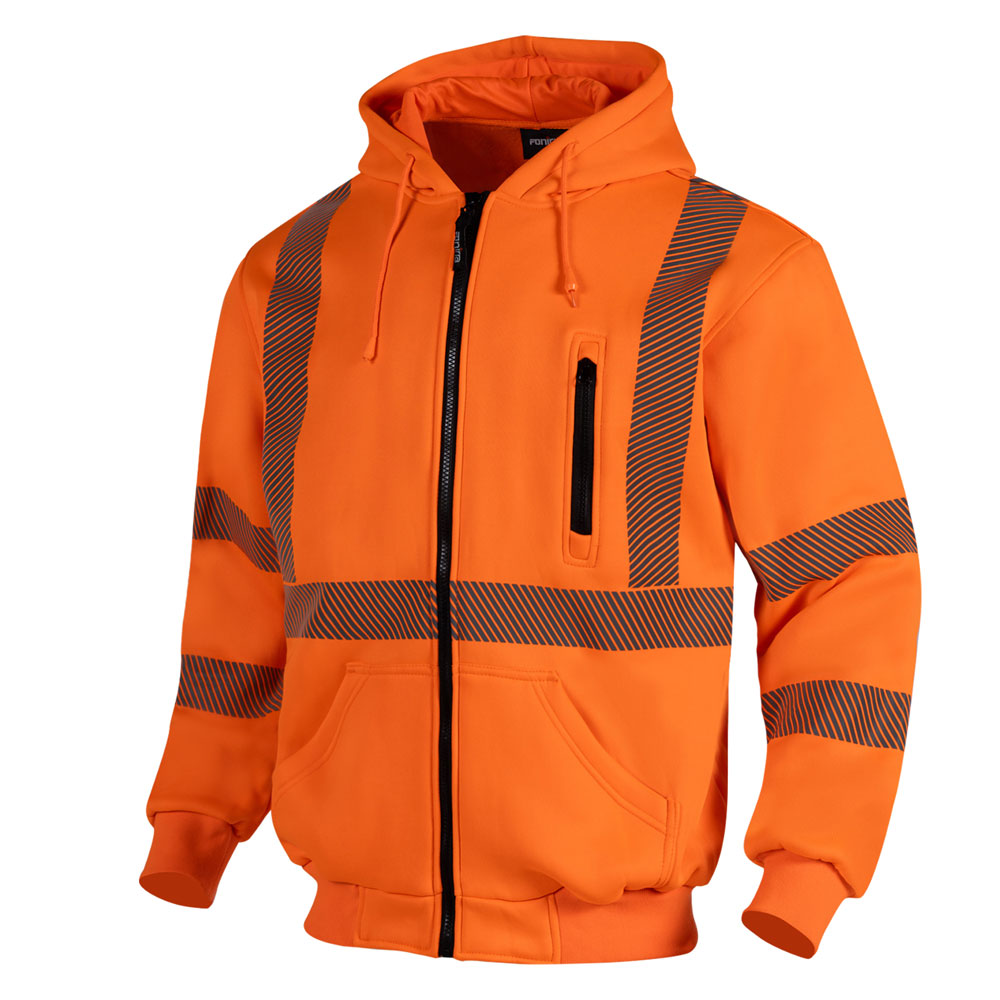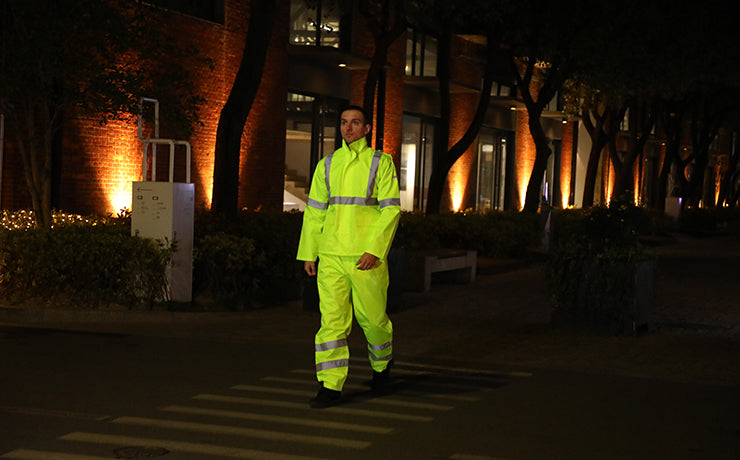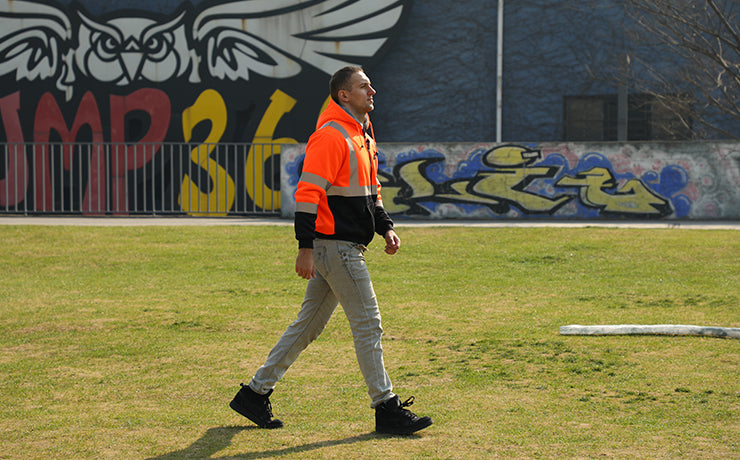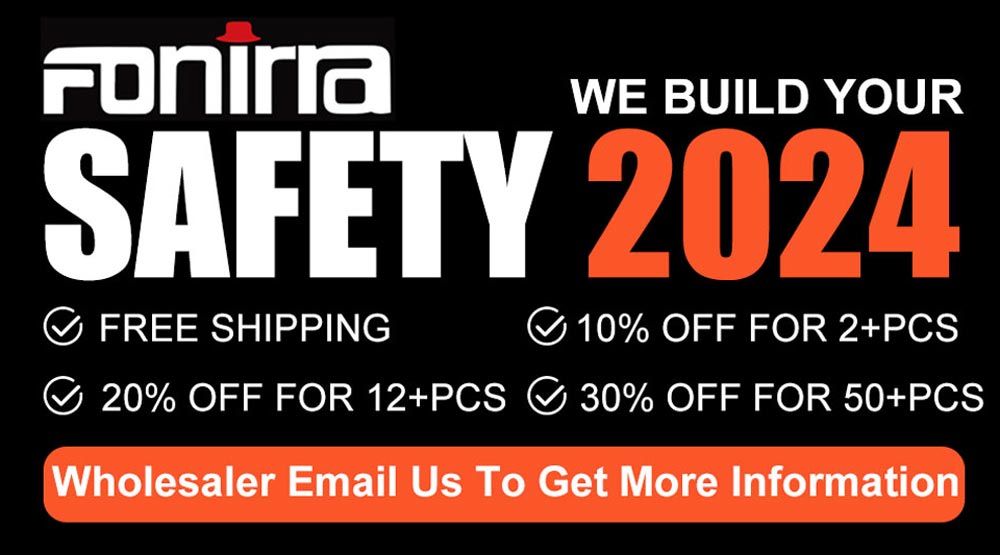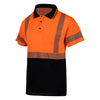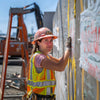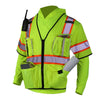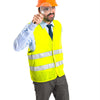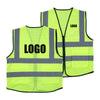Understanding ANSI/ISEA Standards for Safety Vests on Construction Sites
Introduction:

Safety vest play a crucial role in ensuring the safety and well-being of workers at construction sites (Stewart, 2022). The primary purpose of high-visibility clothing is to enhance the visibility of workers, thereby promoting their safety through the facilitation of attention from others and enabling prompt and appropriate reactions (Puentes, 2020). This objective is achieved by enhancing the visibility of workers. One approach to attaining this goal is to enhance the visibility of workers. Before being worn, protective gear must undergo a comprehensive battery of tests. Developing regulations and standards for safety vests in the United States was a collaborative effort between the International Safety Equipment Association (ISEA) and the American National Standards Institute (ANSI).
This article aims to address two primary objectives. Firstly, it will elucidate the significance of safety vests within the context of construction sites. Secondly, it will scrutinize the regulatory framework for safety vests established by the ANSI and the ISEA. This article explores the importance of reflective safety vests employed in construction sites.
The Purpose of ANSI/ISEA Standards:
The ANSI/ISEA rules were developed primarily to provide a standard for protective apparel on which all parties involved could reach a consensus. The aforementioned activity was carried out to promote safety and reliability in potentially hazardous places of employment, such as construction sites (Hardison et al., 2020). To ensure that safety vests satisfy several criteria, these standards provide color, brightness, and shape guidelines.
ANSI/ISEA 107 Standard for High-Visibility Apparel:
The fundamental performance parameters for personal protection equipment (PPE) with a high degree of visibility are outlined in Standard ANSI/ISEA 107. Examples of such PPE include safety belts. The aforementioned standard categorizes safety vests into different classifications based on the level of visibility each vest offers. Vests of Class 1 provide the lowest amount of visibility possible and are designed to be worn in areas with modest speeds. Workers in high-traffic areas should wear Class 2 vests, whereas workers exposed to high-speed traffic should use Class 3 vests since they give the maximum visibility and are suited for those workers' situations (Bhagavathula et al., 2022).

Factors Determining Compliance:
Specific requirements must be met for a safety vest to comply with the ANSI/ISEA 107 standards. Color, retroreflective material, and design are among these characteristics. For instance, the safety vests' backdrop must be bright, yellow-green, or orange-red. This ensures the most marked contrast possible against the majority of different types of work surroundings. Additionally, the vests are required to be made of retroreflective material. This material reflects light to its source, increasing the wearer's visibility, particularly in low-light environments.
Retroreflective Performance:
To guarantee sufficient visibility, ANSI/ISEA standards recommend that safety vests have a retroreflective performance level at least as good as the bare minimum. Both the quantity of retroreflective material and the location of that material on the vest are critical considerations. The visibility of workers from various angles is improved by reflective tapes and stripes strategically placed on the vest's front, back, and sides. This lowers the likelihood of accidents occurring.

👉Fonirra VT02 High Visibility Multiple Pocket Front Zipper Mesh Safety Vest
Additional Safety Features:
While the primary emphasis of ANSI/ISEA standards is on visibility, safety vests may also have other elements to improve the safety of workers further. These may include straps that can be adjusted to provide a snug fit, pockets where essential equipment or gadgets may be stored, and materials that are permeable to air to ensure comfort during prolonged usage. When shopping for safety vests for workers on construction sites, it is essential to consider the aforementioned extra qualities carefully.
Conclusion:
When ensuring a safe working environment on construction sites, adhering to the ANSI/ISEA regulations for safety vests is essential. These guidelines guarantee that safety vests offer the appropriate amount of visibility and reflectivity, lowering the risk of accidents and increasing the safety of workers. The managers and workers at construction sites should carefully assess the possibilities for safety vests to ensure that they fulfill the ANSI/ISEA standards relevant to their particular jobs' needs. Construction sites can provide their staff a more secure workplace if they emphasize safety and purchase high-quality safety vests.
Final Verdict:
Regarding the hectic environment of construction sites, safety should always be your number one concern. The ANSI/ISEA standards for safety vests shine brightly as a guiding light of reassurance when it comes to safeguarding workers and assuring the visibility of those workers. The producers of safety vests now have a guide to follow in the form of these guidelines, which will help them design garments compliant with specific criteria and improve worker safety.
By conforming to the ANSI/ISEA 107 standard, managers of construction sites and workers on such sites may equip themselves with safety vests that provide the appropriate amount of visibility for the surroundings in which they do their jobs. These vests function as a shield, protecting workers from possible dangers. This may be attributed to the bright fluorescent backdrop or retroreflective material on the vest.
However, the benefits of wearing a safety vest extend beyond just complying with the rules. They come to represent safety and are seen as a sign that the health and safety of construction workers are highly appreciated and given top priority. The adjustable straps guarantee that the backpack will fit snugly, while the other features, such as compartments and materials that allow air to circulate, improve comfort and usefulness.
It is essential to keep in mind that purchasing high-quality safety vests is not just a legal requirement but also a commitment to establishing a building site that is safer and more secure. When workers enter the construction site, they should have the assurance of wearing a safety vest that complies with the stringent ANSI/ISEA requirements. This will give them the peace of mind they deserve.
Thus, we acknowledge the significance of the ANSI and ISEA rules for using safety vests on construction sites. Let's make it a goal to create a working environment where visibility is prioritized, and accidents are kept to a minimum. We can create a construction business emphasizing safety daily if we respect these standards and choose safety vests that satisfy their set criteria.

Recommendations
Here are a few recommendations to further enhance safety on construction sites:
Regular Training and Awareness Programs: Hold regular safety training sessions for all workers on the building site, emphasizing the significance of wearing safety vests that comply with ANSI and ISEA and other types of personal protective equipment (PPE). Raise awareness about the possible risks and give direction on the appropriate use of vests and their maintenance.
Inspect and Replace Worn-out Safety Vests: Check the condition of the safety vests regularly to ensure they are in working order. Any vests that show symptoms of wear and tear, such as colors that have faded or damaged reflective material, should be replaced. If workers are equipped with safety vests of good quality that have been maintained, they will be protected from potential hazards more effectively and have enhanced visibility.
Encourage Proper Vest Usage: Encourage people to wear safety vests appropriately and consistently to foster a safety culture. Construction workers must wear safety vests at all times while on the job site, regardless of the specific activity being carried out. Instruct the workers that their safety, as well as the safety of others, depends on their ability to comply with the rules.
Regular Site Inspections and Maintenance: Carry out regular inspections of the construction site to detect and remedy any possible visibility dangers, such as inadequate lighting or obscured signage. Ensure that the spaces where you work have enough lighting and that any shiny surfaces are spotless and easily visible. Take immediate action to fix any problems that might reduce the visibility of workers.
Stay Updated with ANSI/ISEA Standards: Maintain current awareness of any ANSI/ISEA standards for safety vests that have been updated or revised. To ensure that safety procedures align with current requirements, they should be reviewed and updated regularly. This preventative measure will guarantee that your construction site complies with all applicable regulations and maintains the most significant possible degree of worker safety.
Remember that ensuring everyone's safety should always be a group effort. Please include workers in the decision-making process on safety equipment and procedures. You can develop a workforce that is both safer and more engaged, which will enhance the culture of safety on your construction site. This may be accomplished by actively soliciting their advice and criticism.
Let's work together to build a future in which every worker feels protected, every construction site sparkles with visibility, and safety vests become essential in the fight for a safer tomorrow.
References
Bhagavathula, R., Kassing, A., Gibbons, R., & Medina, A. (2022). Effectiveness of Lighted Work Zone Apparel: Effects on Visibility. https://vtechworks.lib.vt.edu/handle/10919/112574
Hardison, D., Dickerson, A., Sylcott, B., & Lee, K. (2020). Evaluating the effectiveness of worker safety vests on drivers’ visual attention. Construction Research Congress 2020: Safety, Workforce, and Education - Selected Papers from the Construction Research Congress 2020, 105–113. https://doi.org/10.1061/9780784482872.012
Puentes, L. G. (2020). Fitting In: Analyzing the Fit of Safety Vests in the Construction Industry. https://digitalcommons.calpoly.edu/cmsp/481/
Stewart, S. (2022). Safely Covered or Dangerously Exposed: Analyzing the Safety Vest Code of Compliance. https://digitalcommons.calpoly.edu/cmsp/586/

